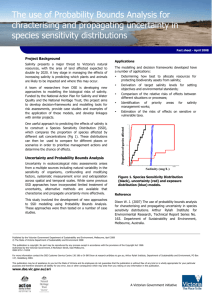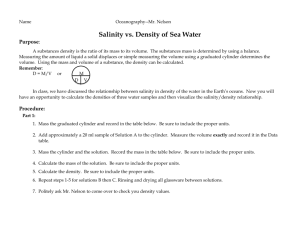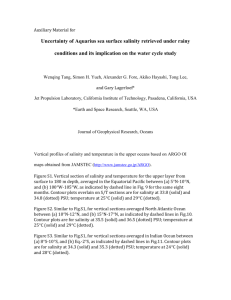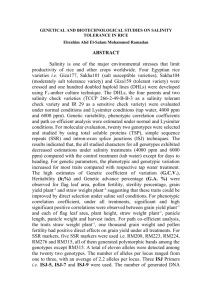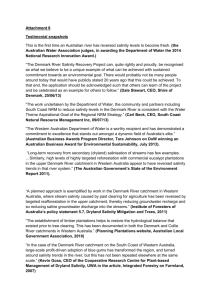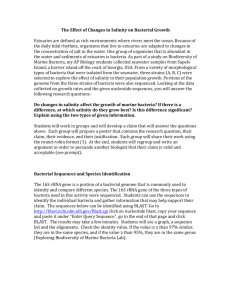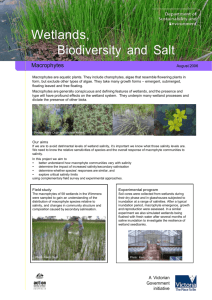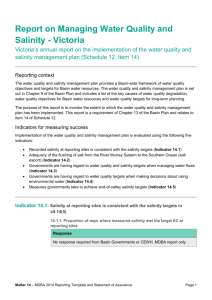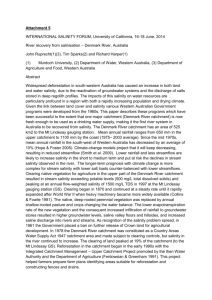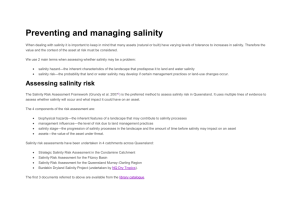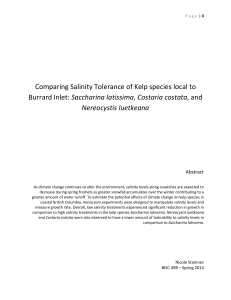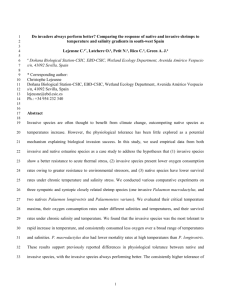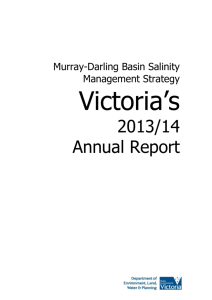Assessing the Risks of Salinity Fact Sheet
advertisement
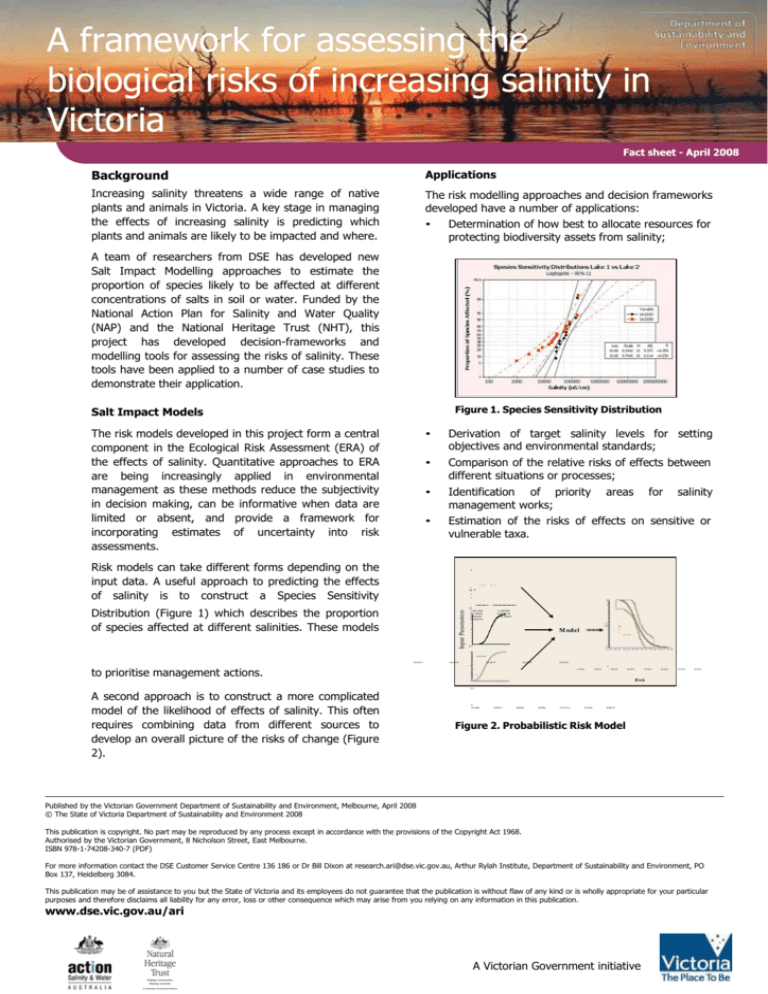
A framework for assessing the biological risks of increasing salinity in Victoria Fact sheet - April 2008 Background Applications Increasing salinity threatens a wide range of native plants and animals in Victoria. A key stage in managing the effects of increasing salinity is predicting which plants and animals are likely to be impacted and where. The risk modelling approaches and decision frameworks developed have a number of applications: • Determination of how best to allocate resources for protecting biodiversity assets from salinity; A team of researchers from DSE has developed new Salt Impact Modelling approaches to estimate the proportion of species likely to be affected at different concentrations of salts in soil or water. Funded by the National Action Plan for Salinity and Water Quality (NAP) and the National Heritage Trust (NHT), this project has developed decision-frameworks and modelling tools for assessing the risks of salinity. These tools have been applied to a number of case studies to demonstrate their application. Figure 1. Species Sensitivity Distribution Salt Impact Models The risk models developed in this project form a central component in the Ecological Risk Assessment (ERA) of the effects of salinity. Quantitative approaches to ERA are being increasingly applied in environmental management as these methods reduce the subjectivity in decision making, can be informative when data are limited or absent, and provide a framework for incorporating estimates of uncertainty into risk assessments. • Derivation of target salinity levels for setting objectives and environmental standards; • Comparison of the relative risks of effects between different situations or processes; • Identification of priority management works; • Estimation of the risks of effects on sensitive or vulnerable taxa. Risk models can take different forms depending on the input data. A useful approach to predicting the effects of salinity is to construct a Species Sensitivity areas for salinity 1 e liz _ b 4 0 .5 1 Input Parameters Distribution (Figure 1) which describes the proportion of species affected at different salinities. These models 0 100 00 30 000 50000 7000 0 2 0000 4000 0 6 0 000 0 .5 eliz _b 4 M od el 1 co n c B 0.5 co n cA 30 00 0 to prioritise management actions. 40 00 0 50 00 0 60 00 0 70 00 0 0 1 0 00 0 20 00 0 300 00 40 00 0 50 00 0 60 00 0 70 00 0 80 00 0 1 co n cB R isk A second approach is to construct a more complicated model of the likelihood of effects of salinity. This often requires combining data from different sources to develop an overall picture of the risks of change (Figure 2). 0.5 0 20 000 3000 0 40000 50000 600 0 0 70 000 8000 0 Figure 2. Probabilistic Risk Model Published by the Victorian Government Department of Sustainability and Environment, Melbourne, April 2008 © The State of Victoria Department of Sustainability and Environment 2008 This publication is copyright. No part may be reproduced by any process except in accordance with the provisions of the Copyright Act 1968. Authorised by the Victorian Government, 8 Nicholson Street, East Melbourne. ISBN 978-1-74208-340-7 (PDF) For more information contact the DSE Customer Service Centre 136 186 or Dr Bill Dixon at research.ari@dse.vic.gov.au, Arthur Rylah Institute, Department of Sustainability and Environment, PO Box 137, Heidelberg 3084. This publication may be of assistance to you but the State of Victoria and its employees do not guarantee that the publication is without flaw of any kind or is wholly appropriate for your particular purposes and therefore disclaims all liability for any error, loss or other consequence which may arise from you relying on any information in this publication. www.dse.vic.gov.au/ari A Victorian Government initiative
